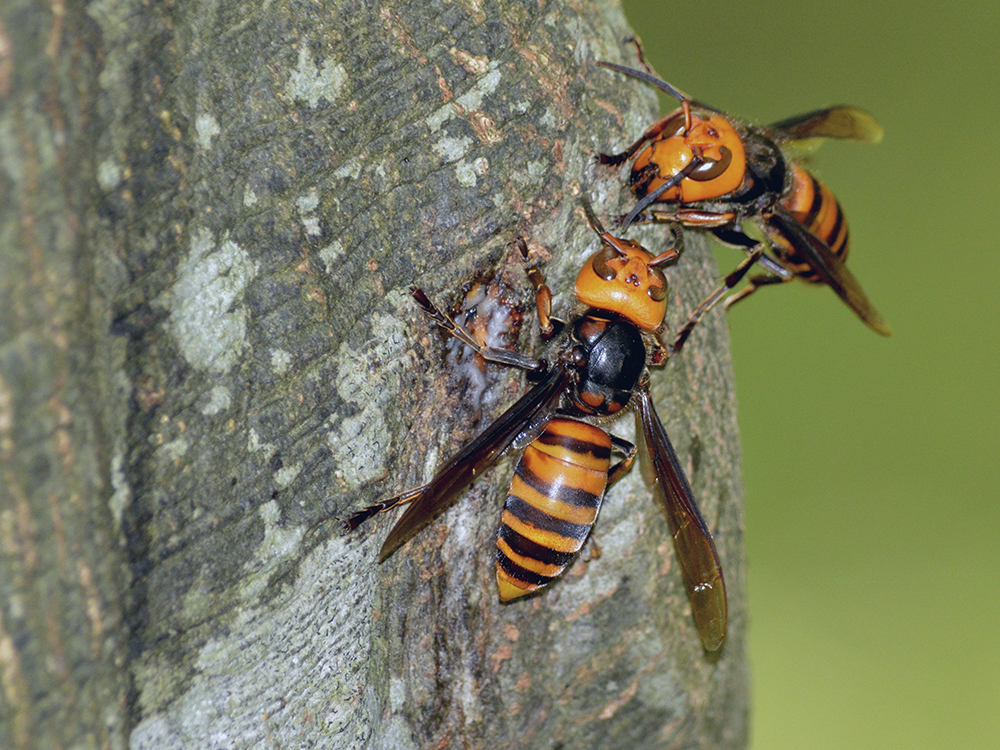What You Need To Know About the Asian Giant Hornet, a.k.a. the Murder Hornet
06.17.2020

The Asian giant hornet, Vespa mandarinia, commonly referred to as the “murder hornet,” has shown up in recent months in the state of Washington and Vancouver, British Columbia.
Although the insects sound dangerous, entomologists who work with these hornets in their native habitat of Japan say they are not aggressive toward humans unless their nest is disturbed.
Dr. Scott Rippel MS’96, PhD’99, senior biology lecturer at The University of Texas at Dallas who also runs the University’s apiaries, agrees and said the risk from Asian giant hornets is low in Texas at this time. While a sting is painful, it’s usually only life-threatening to humans if anaphylactic shock occurs without quick treatment.
“We should not be fearful or concerned about Asian giant hornets at this time in Texas,” Rippel said. “There are about 50 reported human deaths in Japan per year from the stings of these hornets, which corresponds to the number of deaths in the U.S. due to lightning strikes, so I would not be too fearful of dying from an Asian giant hornet sting.”
Rippel said it’s possible the species might become invasive in the U.S. within the next decade. People who are concerned can take the following steps to begin to differentiate an Asian giant hornet from other common bugs:
- Look for distinctive characteristics of the hornet, such as large size (1.5-2 inches) and the bright orange head.
- If possible, take a photo from a distance.
- Consider posting the photo to iNaturalist, where the species can be verified.
- If it is indeed an Asian giant hornet, report it to your state’s Department of Agriculture.
- Do not attempt to kill, remove or capture the hornet on your own.
Although the insects are not a high risk to humans, experts are concerned about what this species could mean for bee populations. Asian giant hornets can decimate a beehive, whether captive or wild, in a matter of hours.
Rippel offers the following tips for homeowners in North Texas who want to help local honey bees thrive:
- Decrease the use of pesticides, only using spot spraying when needed.
- Plant large quantities of diverse pollen and nectar-producing plants.
- Practice seasonal mowing in low-use areas such as highway medians to allow flowers to bloom fully.
- Never disturb or kill a honey bee swarm. Instead, contact a removal expert found on the Texas Beekeepers Association site.
“Learning more about the Asian giant hornet will help prevent fear and destruction of unrelated species mistaken for this possible invasive species,” Rippel said.
–Robin Russell



